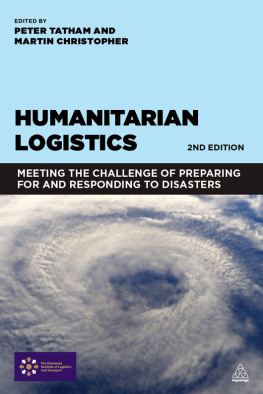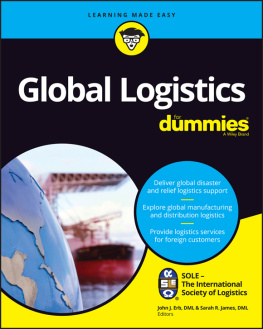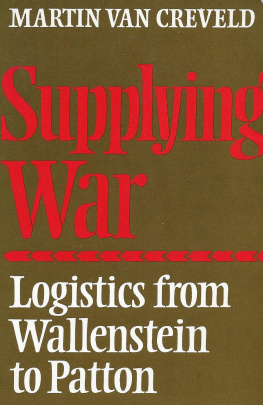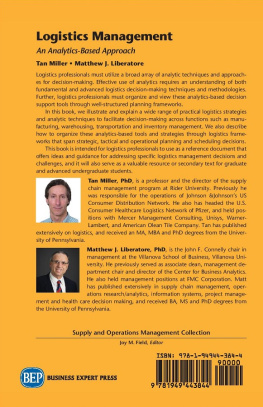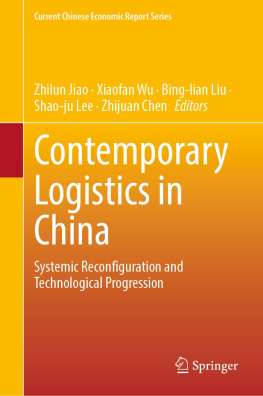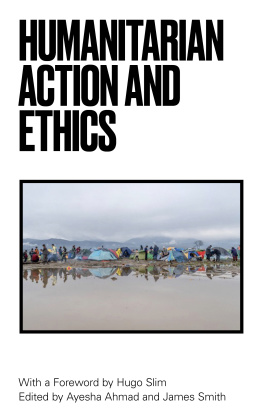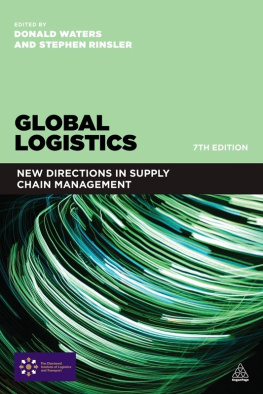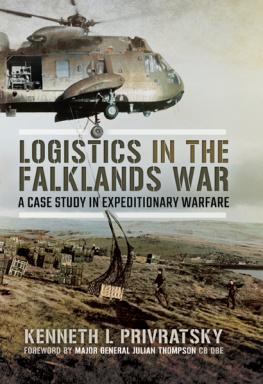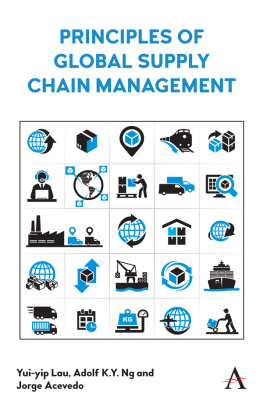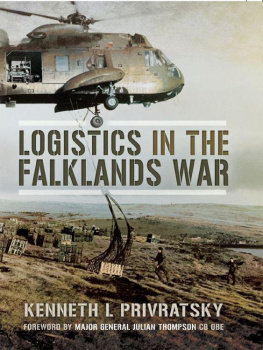
PAUL LARSON
The most deadly killer in any humanitarian emergency is not dehydration, measles, malnutrition or the weather. It is bad management. (John Telford, as cited by Hulm, 1994)
Natural disasters and wars bring tremendous suffering and loss. After (and even during) wars and disasters, the humanitarian community responds, racing against the clock to ease the suffering. While poor quality in the commercial realm can mean lost sales, poor humanitarian service quality, eg long delivery times, dirty water or expired medicine, can mean lost lives.
Service quality is in the eye of the stakeholder. In humanitarian relief, relevant stakeholders include beneficiaries, donors, relief workers, implementing partners, and host governments. This chapter frames humanitarian service quality as a process management and improvement issue. It seems humanitarians are somewhat obsessed with standards, to the neglect of other, complementary approaches to process improvement. There are several reasons humanitarian organizations may find standards useful, including: high employee/volunteer turnover, specific donor reporting requirements, and an urgency of service to beneficiaries. Standards to assure service quality and improve humanitarian relief processes range from codes of conduct or good practice to formal humanitarian standards to ISO 9001. Beyond standards, there are a variety of complementary tools available to support quality and process improvement, such as: process mapping, the balanced scorecard, benchmarking, and six sigma.
Disaster brings tremendous suffering and loss of life. In 2012, 357 natural disasters killed nearly 10,000 people worldwide, affected more than 124 million others, and caused US$157 billion of economic damages (Guha-Sapir et al , 2013). Since the end of World War II, there have been over 250 major wars; over 23 million people have been killed, tens of millions made homeless, and millions more injured and bereaved. In armed conflicts since 1945, 90 per cent of casualties have been civilians compared to 10 per cent and 50 per cent in World Wars I and II respectively (www.worldrevolution.org). After a disaster, or during a war, humanitarian agencies respond, racing against the clock to save lives and ease the suffering. Service quality, including timely delivery, can mean the difference between life and death.
Service quality is in the eye of the beholder. In humanitarian relief, beholders or stakeholders include beneficiaries, donors, humanitarian relief workers, implementing partners, and host governments. This chapter reviews a selection of the humanitarian quality and accountability literature. The topic is framed as a matter of process management and improvement. There are a variety of approaches to quality assessment (and process improvement) being used or recommended for use in the humanitarian community, many involving standards. It seems humanitarians are somewhat obsessed with standards, to the neglect of other, complementary approaches to process improvement. The chapter concludes with a challenge to humanitarian logisticians and their commercial counterparts.
A variety of tools and techniques for process management and quality improvement have been developed in the commercial sector. While logisticians in this sector work with established actors and predictable supply and demand, humanitarians deal with unknown or ever-changing actors and unpredictable supply and demand (Kovcs and Spens, 2007). Unlike businesses, aid agencies often receive unsolicited and unwanted supplies as donations, eg laptops in places with no electricity or high-heeled shoes in tropical regions. These mistakes increase logistics costs and compromise service quality, such as timely delivery of service. This is an especially demanding environment for process management.
Compared to business logisticians, humanitarians face greater challenges in working with a diverse group of stakeholders, including beneficiaries, donors, implementing partners, host governments, militaries, suppliers, etc. Further, coordination of many different aid agencies, suppliers, and local and regional actors, all with their own ways of operating and unique missions and cultures, can be a bit of a dogs breakfast. There is much duplication of effort and little standardization of procedures in the humanitarian sector.
summarizes the contrast between business and humanitarian logistics (Larson, 2011). While time is money to the business logistician, time is life (or death) to the humanitarian. Humanitarians seek social impact rather than profit, though they must be mindful of donor desires and budget limits. Such supply chains must be flexible and responsive to unpredictable events, as well as efficient and able to maximize reach of scarce resources. More effective delivery can save the day; greater efficiency means serving more people in need. The most pressing challenge may be to balance the seemingly conflicting objectives of service quality, flexibility and efficiency. This is process management.
TABLE 1.1 Commercial logistics versus humanitarian logistics
| Logistics Context |
| Aspect | Commercial | Humanitarian |
Purpose | Economic profit | Social impact |
Context | Uninterrupted | Interrupted |
Perspective on time | Time is money | Time is life (or death) |
People served | Paying customers | Beneficiaries |
Source of funds | Paying customers | Donors |
Workforce | Paid staff | Volunteers; staff |
The humanitarian non-governmental organizations (NGOs) face unique challenges to process excellence. The work is complex, unpredictable, and intensely people-oriented. Much of the decision making favours local autonomy over centralization. Further, there is no profit motive; workers are dedicated to helping people, not making money. These factors foster bureaucratic processes with multiple hand-offs, reviews and approvals; yielding long lead times, poor quality and high costs (Parris, 2013).
There are a variety of tools and techniques to support process management and improvement, most of which originated in the commercial sector. Such tools and techniques include: activity-based costing (ABC), balanced scorecard, benchmarking, ISO 9000, SCOR model and Six Sigma.
Based on his survey of humanitarian organizations, Blecken (2010) reports a lack of process modelling and management, along with inadequate measurement of supply chain performance. While 48 per cent of respondents had no written documentation of supply chain processes, another 32 per cent had only partial process documentation. For process improvement in humanitarian logistics, he recommends a variant of the supply chain operations reference (SCOR) model (http://supply-chain.org/scor).
Schulz and Heigh (2009) develop a simple tool, based on the balanced scorecard, for the International Federation of Red Cross and Red Crescent Societies (IFRC). The tool focuses on four broad perspectives: (1) customer service; (2) financial control; (3) process adherence; and (4) innovation and learning. Simplicity facilitates constructive involvement of users and other stakeholders. The tool contains standard measures, includes staff development, and is likely attractive to donors. However, it appears to exclude direct contact with beneficiaries.
Next page
